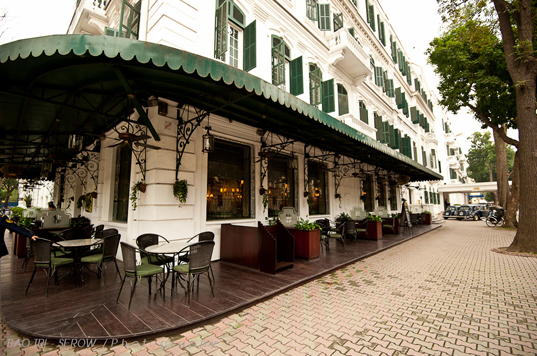
Sitting having afternoon tea at The Fairmount Peace Hotel in Shanghai with its art deco cake holders and lamps I feel as if i have been time-warped back to the time when Shanghai was the most exciting city in “The Orient” and the Europeans and Americans who went there were in search of adventure and romance. The grand old hotels of Asia hark back to a time of pink gins and potted palms, ceiling fans and crumpled white linen suites. So grab Somerset Maugham’s collected works for a little light reading and check in. Here are some of my favorites.
FAIRMONT PEACE HOTEL, SHANGHAI, CHINA
The 12-story Peace Hotel began life as the Cathay Hotel in the 1920s, its founder, one Victor Sassoon, made his money out of arms and opium, so the hotel had a suitably decadent beginning. Noel Coward stayed here (of course –where in the Far East didn’t he check-in?) and wrote Private Lives in room 314. Charlie Chaplin and George Bernard Shaw also stayed.
EASTERN & ORIENTAL, PENANG, MALAYSIA
Noel Coward’s famous lines ‘mad dogs and Englishmen go out in the midday sun” were written about colonial life in the Malay states. Established in 1885 and restored to its former glory ten years ago the E &O has elegant suites overlooking the Malacca Strait and claw foot bath tubs. Take afternoon tea in the domed Palm Court and drink your tea with your little finger out as the British upper classes would have done. But be warned on returning to your room, that the antique lift is a touch temperamental. Georgetown, where the hotel stands, is now a UNESCO World Heritage site so a historical tour of the surrounding area’s colonial charms is a must.
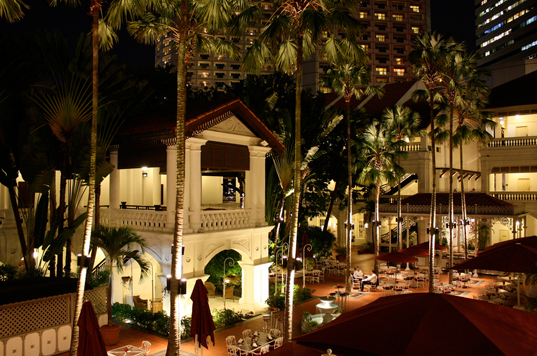
THE RAFFLES, SINGAPORE
My parents booked me into a room at the Raffles when I was 18 and on my first trip alone to Asia in the hope that I wouldn’t get into any trouble there. Clearly they’d forgotten the hotel’s history; when the decadent and gin-soaked sat on its white-arched verandas and discussed all kinds of dubious deeds from opium smuggling to the overthrow of a dictatorship. The authors who propped up the Writers Bar and have suites names after them, such as Somerset Maugham and Noel Coward, were hardly paragons of virtue either. When asked whether he had a “gentleman in his room” by one Asian hotel, Coward supposedly quipped, “I don’t know I’ll ask him”. Sadly Raffles is squeaky clean these days with an arcade of luxury shops and a revolving door of German tourists. Never mind, have a consoling Singapore Sling at the bar and toast the hotel’s heady history.
THE SOFITEL METROPOLE, HANOI, VIETNAM
Open your copy of Graham Green’s The Quiet American and start reading now. Think Catherine Deneuve in Indochine and a Vietnam in the last throes of French Colonialism and you have the feel of this place. History seeps out of every pore. The hotel sat and watched as Hanoi weathered war and peace. And foreign correspondents and diplomats have gathered in Le Beaulieu, its restaurant, to discuss both for over a century. No wonder Sofitel has named this hotel the first of its new Sofitel Legends brand. If you want to be a quiet America (or Australian or Brit) you can book the Graham Greene Suite, drink a Graham green cocktail in the bar and even eat a duck dish named after him. The new Opera Wing has swish suites and rooms but I say you just have to stay in the historical wing to really drink in the mood of this grand time warped hotel.
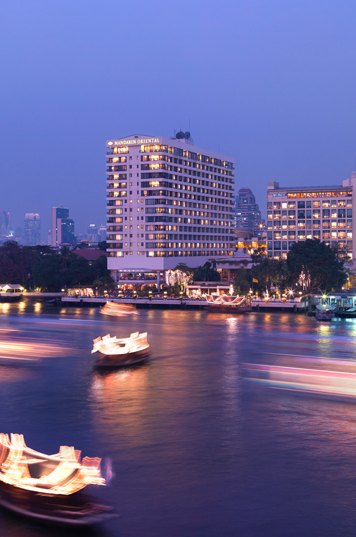
THE ORIENTAL, BANGKOK, THAILAND
The grand old Oriental, which has sat overlooking the Chao Phraya River for over 130 years, is a Bangkok institution. You’ll find the usual suspects here with a whole Writers Wing devoted to the memory of authors such as Maugham, Coward, Michener, Conrad and Greene. Potted Palms and languid ceiling fans whisper of hot afternoons spent drinking and playing canasta. Ironic that Maugham should have a suite named after him considering he had malaria on his first visit and was almost evicted , so the story goes, because the management didn’t want him dying in one of the rooms.
MAJESTIC HOTEL, HO CHI MINH CITY, VIETNAM
“You could believe it would be seven o’clock and cocktail time on the roof of the majestic” wrote Greene’s anti-hero Fowler in yep, you guessed it that ubiquitous Vietnam read, The Quiet American. Stuck in the delta Fowler longed for the cool rooftop bar of the Majestic as have many travellers since the hotel first opened in the 1925. The hotel prides itself in offering a combination of ‘tradition, hospitality and elegance”. Black and white photographs of the hotel in its heyday have pride of place. Clearly ‘Colonial’ isn’t a dirty word here, since it is used a lot; it describes every one of the hotel’s room classes. The Luxury Travel Bible likes the 6 Colonial Majestic Suites or pick one of the two Colonial Presidential Suites if you really want to pretend you are a member of the old pink gin-drinking leisured classes. Or jump a century and sit in the Cyclo Cafe and imagine the grenade grills that once covered the windows in the days of the ‘Nam war.
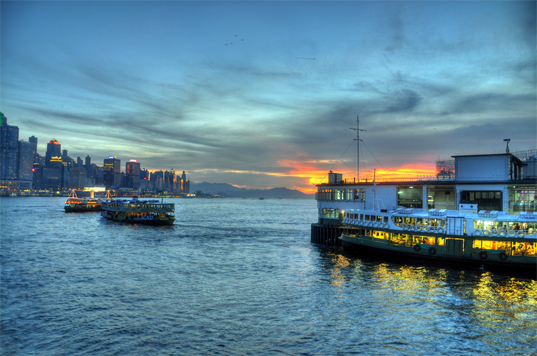
THE PENINSULA, HONG KONG, CHINA
The Pen opened it doors in December 1928. Since then it has witnessed Hong Kong’s changing fortunes and been host to everyone from Japanese troops in WW11 to the glitterati of the film world, politicians and royalty. In 1994 they built its spanking new tower and in 1997 when the colony was ceded to China, they partied ‘til dawn in its ballroom. Its fleet of green Rolls Royces pay homage to an earlier age of opulence and elegance as do its box-hated bell boys and sweeping staircase. Those who book into The Peninsula Suite on the 26th floor have easy access to the helipad and a butler service and a Rolls Royce on standby for their exclusive use 24 hours a day.
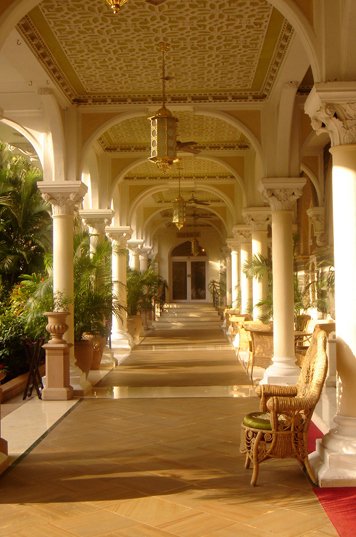
THE TAJ MAHAL PALACE & TOWER, MUMBAI, INDIA
The Taj Mahal Hotel, in what used to be known as Bombay, was built by Indian industrialist Tata in a stand against the colonialism and snobbery that had once seen him denied entrance to one of the better known British/Bombay hotels. Which is why, unlike other legendary Asian hotels it isn’t built in colonial style. When it opened its doors in 1903 visitors were greeted by a feast of Indian, Moorish and Florentine influences with mosaics, a vaulted alabaster ceiling and gilded colonnades everywhere. The victim of a terrorist bomb blast in December 2008 it has since re-opened its doors.
LE ROYAL, PHNOM PHEN .CAMBODIA
The hotel was built the year after The Peninsula in 1929 for the comfort of wealthy passengers who had disembarked the steamship lines to view the newly discovered long-lost Kingdom of Angkor. Somerset Maugham stayed here (along with Coward he gets the prize for checking into the greatest number of Far Eastern five stars), as did Jackie Kennedy, Andre Malraux and Charles de Gaulle. We know this because in the tradition of grand Asian hotels they each have a suite named after them. The top suite is Le Royal Suite with a cream and red decor that reflects both French colonial and traditional Khmer style. When the Khmer Rouge ravaged the country the hotel fell into disrepair. Rescued by the Raffles group and now technically called Raffle Hotel Le Royal its dark wood floors and antique furniture are a return to the glory days. Phnom Phen itself is still struggling as Angkor tourists fly straight into Siem Reap from Thailand and miss the capital.
THE STRAND HOTEL, YANGON, MYANMAR
Built in 1901 by the famous Sarkie brothers (who also built the E & O Hotel Penang and Raffles Singapore), the hotel’s 32 suites have recently been restored to their former opulence. The hotel has joined the GHM stable which has other stellar properties such as The Chedi Muscat and The Nam Hai in Hoi An. Sitting in a rattan chair at The Cafe ,with its teak-framed windows and black ceiling fans, you feel like the character in Rudyard Kipling’s The Road to Mandalay –“ Ship me somewhere east of Suez/Where the best is like the worst/And there ain’t no Ten Commandments/And a cat can raise a thirst’.
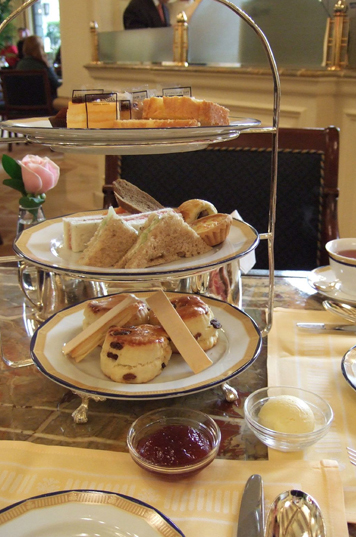
Hilary Doling is also Editor in Chief of www.luxurytravelbible.com
www.e-o-hotel.com
www.mandarinoriental.com/bangkok
www.sofitel.com
www.sofitel-metropole-hanoi.com
www.raffleshotel.com
www.thepeninsula/hongkong
